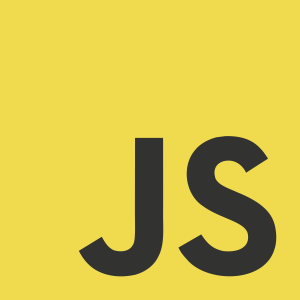Here’s a nice list of plain JavaScript dragging and dropping solutions. They are minimal, as they serve as proof of concept, and they can be easily extended.
Solution #1: JavaScript Card Sorting
This first solution uses basic HTML5 events to drag and drop elements (basically switching places). See a JavaScript sorting demo and check the code below.
Add the elements and add a droptarget class to each of them.
<p>Sort these cards into your order of preference:</p>
<ul class="sortable">
<li class="droptarget" data-id="184">? Apples</li>
<li class="droptarget" data-id="454">? Oranges</li>
<li class="droptarget" data-id="558">? Bananas</li>
<li class="droptarget" data-id="1247">? Strawberries</li>
</ul>Add the styling for the draggable elements (see the demo for more styles):
[draggable] {
user-select: none;
}
[draggable]:hover {
outline: 3px solid #009432;
}
Add the JavaScript. Note that a serialisedData string is being returned, if you need to save the current state of the items.
if (document.querySelector('.droptarget')) {
let source;
[].forEach.call(document.querySelectorAll('.droptarget'), sortable => {
sortable.draggable = true;
sortable.ondragstart = event => {
dragStarted(event);
};
sortable.ondragover = event => {
event.preventDefault();
event.dataTransfer.dropEffect = 'move';
};
sortable.ondragenter = event => {
event.target.style.outline = "3px solid #0652DD";
};
sortable.ondragleave = event => {
event.target.style.outline = "";
};
sortable.ondrop = event => {
dropped(event);
};
});
}
function dragStarted(event) {
source = event.target;
event.dataTransfer.setData('text/plain', event.target.innerHTML);
event.dataTransfer.effectAllowed = 'move';
}
function dropped(event) {
event.preventDefault();
event.stopPropagation();
// update text in dragged item
source.innerHTML = event.target.innerHTML;
event.target.style.outline = "";
// update text in drop target
event.target.innerHTML = event.dataTransfer.getData('text/plain');
let elements = document.getElementsByTagName('li'),
serialisedData = '';
for (let i = 0; i < elements.length; i++) {
serialisedData += `listItem[]=${elements[i].dataset.id}&`;
}
console.log(serialisedData);
}
Solution #2: JavaScript Dragging & Dropping
This example comes from MDN Web Docs. See a JavaScript draggable elements demo. I used this example for a mini quiz game where the user was suppose to drag the correct answer in the form of a visual icon over a parent element.
Solution #3: Simulated Dragging & Dropping
Why simulated? Because it only uses mouseup, mousemove and mousedown events to simulate dragging by detecting the mouse position relative to draggable/droppable elements. See a JavaScript drag & drop demo and check the code below.
Add the HTML:
<div class="DragContainer">
<div class="DragBox" id="Item1" dragclass="DragDragBox">Item #1</div>
<div class="DragBox" id="Item2" dragclass="DragDragBox">Item #2</div>
<div class="DragBox" id="Item3" dragclass="DragDragBox">Item #3</div>
<div class="DragBox" id="Item4" dragclass="DragDragBox">Item #4</div>
</div>Add the styling for the draggable elements:
.DragContainer {
position: relative;
border: #669999 2px solid;
padding: 8px;
margin: 8px;
}
.DragBox {
border: #000 1px solid;
padding: 8px 24px;
margin-bottom: 4px;
cursor: pointer;
background-color: #eeeeee;
transition: all 0.25s ease-out;
}
.DragBox:hover {
background-color: #ffff99;
}
.DragHelper {
border: 1px dotted red;
transform: scale(1.1);
transition: all 0.15s ease-out;
}
.DragDragBox {
border: #000 1px solid;
padding: 8px;
margin-bottom: 4px;
cursor: pointer;
opacity: 0.5;
background-color: #ff99cc;
position: absolute;
}
And, finally, check the JavaScript (it’s all commented inside):
/**
iMouseDown represents the current mouse button state: up or down
lMouseState represents the previous mouse button state so that we can
check for button clicks and button releases:
if (iMouseDown && !lMouseState) // button just clicked!
if (!iMouseDown && lMouseState) // button just released!
*/
var mouseOffset = null;
var iMouseDown = false;
var lMouseState = false;
// Demo 0 variables
var DragDrops = [];
var curTarget = null;
var lastTarget = null;
var rootParent = null;
var rootSibling = null;
Number.prototype.NaN0 = function () {
"use strict";
return isNaN(this) ? 0 : this;
};
function CreateDragContainer(element) {
"use strict";
/*
Create a new "Container Instance" so that items from one "Set" can not
be dragged into items from another "Set"
*/
var j = 0,
cDrag = DragDrops.length;
DragDrops[cDrag] = [];
element.setAttribute("DropObj", cDrag);
/*
Each item passed to this function should be a "container". Store each
of these items in our current container
*/
DragDrops[cDrag].push(element);
/*
Every top level item in these containers should be draggable. Do this
by setting the DragObj attribute on each item and then later checking
this attribute in the mouseMove function
*/
for (j = 0; j < element.childNodes.length; j += 1) {
// Firefox puts in lots of #text nodes...skip these
if (element.childNodes[j].nodeName !== "#text") {
element.childNodes[j].setAttribute("DragObj", cDrag);
}
}
}
function getPosition(e) {
"use strict";
var left = 0,
top = 0;
while (e.offsetParent) {
left +=
e.offsetLeft +
(e.currentStyle
? parseInt(e.currentStyle.borderLeftWidth, 10).NaN0()
: 0);
top +=
e.offsetTop +
(e.currentStyle
? parseInt(e.currentStyle.borderTopWidth, 10).NaN0()
: 0);
e = e.offsetParent;
}
left +=
e.offsetLeft +
(e.currentStyle
? parseInt(e.currentStyle.borderLeftWidth, 10).NaN0()
: 0);
top +=
e.offsetTop +
(e.currentStyle
? parseInt(e.currentStyle.borderTopWidth, 10).NaN0()
: 0);
return { x: left, y: top };
}
function mouseCoords(ev) {
"use strict";
if (ev.pageX || ev.pageY) {
return {
x: ev.pageX,
y: ev.pageY
};
}
return {
x: ev.clientX + document.body.scrollLeft - document.body.clientLeft,
y: ev.clientY + document.body.scrollTop - document.body.clientTop
};
}
function getMouseOffset(target, ev) {
"use strict";
ev = ev || window.event;
var docPos = getPosition(target),
mousePos = mouseCoords(ev);
return {
x: mousePos.x - docPos.x,
y: mousePos.y - docPos.y
};
}
function mouseMove(ev) {
"use strict";
ev = ev || window.event;
/*
* We are setting target to whatever item the mouse is currently on
* Firefox uses event.target here, MSIE uses event.srcElement
*/
var elementInstance,
target = ev.target || ev.srcElement,
mousePos = mouseCoords(ev),
origClass,
dragClass,
dragConts,
dragObj,
oClass,
pos,
i,
j;
// mouseOut event - fires if the item the mouse is on has changed
if (lastTarget && target !== lastTarget) {
// reset the classname for the target element
origClass = lastTarget.getAttribute("origClass");
if (origClass) {
lastTarget.className = origClass;
}
}
/*
dragObj is the grouping our item is in (set from the createDragContainer function).
if the item is not in a grouping we ignore it since it can't be dragged with this
script.
*/
dragObj = target.getAttribute("DragObj");
// if the mouse was moved over an element that is draggable
if (dragObj !== null) {
// if the user is just starting to drag the element
if (iMouseDown && !lMouseState) {
// mouseDown target
curTarget = target;
// Record the mouse x and y offset for the element
rootParent = curTarget.parentNode;
rootSibling = curTarget.nextSibling;
mouseOffset = getMouseOffset(target, ev);
/*
Record the current position of all drag/drop targets related
to the element. We do this here so that we do not have to do
it on the general mouse move event which fires when the mouse
moves even 1 pixel. If we don't do this here the script
would run much slower.
*/
dragConts = DragDrops[dragObj];
/*
first record the width/height of our drag item. Then hide it since
it is going to (potentially) be moved out of its parent.
*/
curTarget.setAttribute(
"startWidth",
parseInt(curTarget.offsetWidth, 10)
);
curTarget.setAttribute(
"startHeight",
parseInt(curTarget.offsetHeight, 10)
);
curTarget.style.display = "none";
// loop through each possible drop container
for (i = 0; i < dragConts.length; i += 1) {
elementInstance = dragConts[i];
pos = getPosition(dragConts[i]);
/*
save the width, height and position of each container.
Even though we are saving the width and height of each
container back to the container this is much faster because
we are saving the number and do not have to run through
any calculations again. Also, offsetHeight and offsetWidth
are both fairly slow. You would never normally notice any
performance hit from these two functions but our code is
going to be running hundreds of times each second so every
little bit helps!
Note that the biggest performance gain here, by far, comes
from not having to run through the getPosition function
hundreds of times.
*/
elementInstance.setAttribute(
"startWidth",
parseInt(elementInstance.offsetWidth, 10)
);
elementInstance.setAttribute(
"startHeight",
parseInt(elementInstance.offsetHeight, 10)
);
elementInstance.setAttribute("startLeft", pos.x);
elementInstance.setAttribute("startTop", pos.y);
// Loop through each child element of each container
for (j = 0; j < dragConts[i].childNodes.length; j += 1) {
elementInstance = dragConts[i].childNodes[j];
if (
elementInstance.nodeName === "#text" ||
dragConts[i].childNodes[j] === curTarget
) {
continue;
}
pos = getPosition(dragConts[i].childNodes[j]);
// Save the width, height and position of each element
elementInstance.setAttribute(
"startWidth",
parseInt(elementInstance.offsetWidth, 10)
);
elementInstance.setAttribute(
"startHeight",
parseInt(elementInstance.offsetHeight, 10)
);
elementInstance.setAttribute("startLeft", pos.x);
elementInstance.setAttribute("startTop", pos.y);
}
}
}
}
// If we get in here we are dragging something
if (curTarget) {
dragConts = DragDrops[curTarget.getAttribute("DragObj")];
var activeCont = null;
var xPos =
mousePos.x -
mouseOffset.x +
parseInt(curTarget.getAttribute("startWidth"), 10) / 2;
var yPos =
mousePos.y -
mouseOffset.y +
parseInt(curTarget.getAttribute("startHeight"), 10) / 2;
// check each drop container to see if our target object is "inside" the container
for (i = 0; i < dragConts.length; i += 1) {
elementInstance = dragConts[i];
if (
parseInt(elementInstance.getAttribute("startLeft"), 10) <
xPos &&
parseInt(elementInstance.getAttribute("startTop"), 10) < yPos &&
parseInt(elementInstance.getAttribute("startLeft"), 10) +
parseInt(elementInstance.getAttribute("startWidth"), 10) >
xPos &&
parseInt(elementInstance.getAttribute("startTop"), 10) +
parseInt(elementInstance.getAttribute("startHeight"), 10) >
yPos
) {
/*
our target is inside of our container so save the container into
the activeCont variable and then exit the loop since we no longer
need to check the rest of the containers
*/
activeCont = dragConts[i];
// exit the for loop
break;
}
}
// Our target object is in one of our containers. Check to see where our div belongs
if (activeCont) {
if (activeCont !== curTarget.parentNode) {
//activeCont.id;
}
// beforeNode will hold the first node AFTER where our div belongs
var beforeNode = null;
// loop through each child node (skipping text nodes).
for (i = activeCont.childNodes.length - 1; i >= 0; i -= 1) {
elementInstance = activeCont.childNodes[i];
if (elementInstance.nodeName === "#text") {
continue;
}
// if the current item is "After" the item being dragged
if (
curTarget != activeCont.childNodes[i] &&
parseInt(elementInstance.getAttribute("startLeft")) +
parseInt(elementInstance.getAttribute("startWidth")) >
xPos &&
parseInt(elementInstance.getAttribute("startTop")) +
parseInt(elementInstance.getAttribute("startHeight")) >
yPos
) {
beforeNode = activeCont.childNodes[i];
}
}
// the item being dragged belongs before another item
if (beforeNode) {
if (beforeNode != curTarget.nextSibling) {
activeCont.insertBefore(curTarget, beforeNode);
}
// the item being dragged belongs at the end of the current container
} else {
if (
curTarget.nextSibling ||
curTarget.parentNode != activeCont
) {
activeCont.appendChild(curTarget);
}
}
// the timeout is here because the container doesn't "immediately" resize
setTimeout(function () {
var contPos = getPosition(activeCont);
activeCont.setAttribute(
"startWidth",
parseInt(activeCont.offsetWidth)
);
activeCont.setAttribute(
"startHeight",
parseInt(activeCont.offsetHeight)
);
activeCont.setAttribute("startLeft", contPos.x);
activeCont.setAttribute("startTop", contPos.y);
}, 5);
// make our drag item visible
if (curTarget.style.display !== "") {
curTarget.style.display = "";
curTarget.style.visibility = "visible";
curTarget.classList.add('DragHelper');
}
}
}
// track the current mouse state so we can compare against it next time
lMouseState = iMouseDown;
// mouseMove target
lastTarget = target;
// track the current mouse state so we can compare against it next time
lMouseState = iMouseDown;
// this prevents items on the page from being highlighted while dragging
if (curTarget) return false;
}
function mouseUp() {
if (curTarget) {
if (curTarget.style.display == "none") {
if (rootSibling) {
rootParent.insertBefore(curTarget, rootSibling);
} else {
rootParent.appendChild(curTarget);
}
}
curTarget.style.display = "";
curTarget.style.visibility = "visible";
curTarget.classList.remove('DragHelper');
}
curTarget = null;
iMouseDown = false;
// action!
}
function mouseDown(ev) {
ev = ev || window.event;
var target = ev.target || ev.srcElement;
iMouseDown = true;
if (target.onmousedown || target.getAttribute("DragObj")) {
return false;
}
}
document.onmousemove = mouseMove;
document.onmousedown = mouseDown;
document.onmouseup = mouseUp;
window.onload = function () {
CreateDragContainer(document.querySelector(".DragContainer"));
};
Solution #4: DragonflyJS – Vanilla JavaScript Drag and Drop
Based on solution #3, I have created a library called DragonflyJS for easy installation and usage.
By implementing this library, a user is able to drag and drop elements and reorder them. This library enables a group of DOM elements to be sortable. Click on and drag an element to a new spot within the list, and the other items will adjust to fit. By default, sortable items are draggable.



